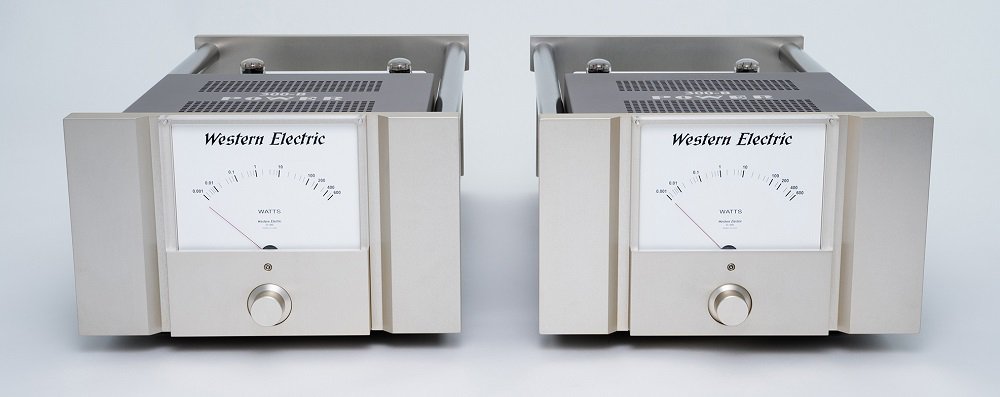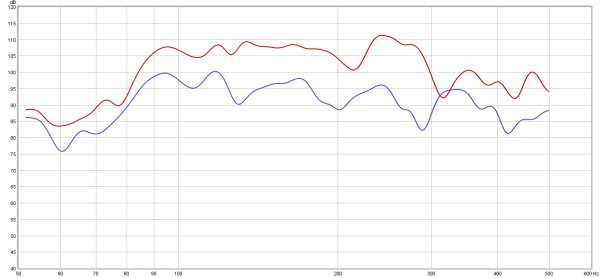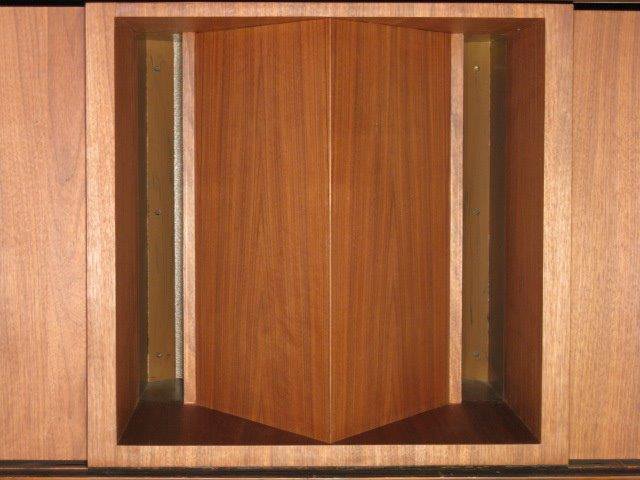-
Posts
3090 -
Joined
-
Last visited
-
Days Won
3
Content Type
Forums
Events
Gallery
Everything posted by Khornukopia
-

1978 Walnut Klipschorns with Cane Grills - Sold!
Khornukopia replied to Lost240's topic in Garage Sale
You could make some corners. You are going to miss these, the moment they get sold to the next lucky person. -

Advice for Beginners - consider this test from an audio club
Khornukopia replied to ODS123's topic in General Klipsch Info
Someone should go collect the $10,000 prize from the amp challenge and spend it on big Klipsch speakers, just for fun. -

Advice for Beginners - consider this test from an audio club
Khornukopia replied to ODS123's topic in General Klipsch Info
One pair of the 97-A Monoblock Amplifiers weigh 230 330 lbs. and will fit on a 36"x36" display platform. Those are BIG meters. -

Advice for Beginners - consider this test from an audio club
Khornukopia replied to ODS123's topic in General Klipsch Info
-
-
My full range home theater speakers qualify as 2 channel speakers when I press a button on the AVR that is labeled STEREO, but there are some specialty home theater speaker packages designed with a subwoofer requirement. My favorite example; "Klipsch THX Ultra2 loudspeakers are optimized for the THX crossover setting. (Technically, that’s an 80Hz crossover with a 12dB/octave high-pass section feeding the amplifiers for the satellite speakers and a 24dB/octave low-pass section feeding the subwoofer amplifier.) All THX-certified receivers and processors incorporate this crossover in their bass-management systems."
-
You will be fine. Connect a single subwoofer cable from the subwoofer 1 pre-out over to the R-120SW line in RCA jack labeled LFE. Then run the Audyssey set-up process and let the Denon adjust the subwoofer settings. The R-120SW has its own amplifier.
-

Bi-Amped K-Horn + K-402 horns w/ KPT-415 woofers
Khornukopia replied to Khornukopia's topic in 2-Channel Home Audio
-

My new K-horns setup needs your help.
Khornukopia replied to pallpoul's topic in 2-Channel Home Audio
Congratulations on your new Klipschorns. Start with #1 on your list. -

Advice for Beginners - consider this test from an audio club
Khornukopia replied to ODS123's topic in General Klipsch Info
Some room and speaker combinations work together really well. Unfortunately, I don't have bandwidth suggestions. I use an auto-EQ system. Press a button, let it measure, calculate and adjust. -
That is a big subwoofer !!!
-

Advice for Beginners - consider this test from an audio club
Khornukopia replied to ODS123's topic in General Klipsch Info
The red trace is my La Scala bass bin. The blue trace is a high quality direct radiator speaker box. The measurement mic was in front of a listening position across the room from the two side by side speakers. This was just to see if the "150Hz hump" was something to be seriously concerned with. The hump was there at one meter measuring distance, but it levels out across the room, so I am not worried about it. The dip at 320Hz changes when I move the mic around. Everything measures a little differently when the mic is re-positioned. EQ switched off -

Advice for Beginners - consider this test from an audio club
Khornukopia replied to ODS123's topic in General Klipsch Info
The display in the picture is the measurement from a wired microphone connected to a dbx PA2. I also use the free download, REW (Room EQ Wizard) on a laptop. There are some inexpensive or free RTA apps available for Android and I-phone devices that are very handy tools. I like to capture freeze frames of my handheld RTA and SPL meter when listening to live music, so I can make realistic comparisons at home. On your smart phone or I-Pod, just search the app store for RTA and/or SPL meter. -

Advice for Beginners - consider this test from an audio club
Khornukopia replied to ODS123's topic in General Klipsch Info
The huge difference is when you turn up the volume. Most of the other speakers can't produce the clean, powerful SPL. -

Advice for Beginners - consider this test from an audio club
Khornukopia replied to ODS123's topic in General Klipsch Info
My Klipschorns measure fairly good, and sound bigger and better than another pair of speakers that measure flatter, in the same room. -

Advice for Beginners - consider this test from an audio club
Khornukopia replied to ODS123's topic in General Klipsch Info
@kink56 , I played some full spectrum pink noise through a La Scala while observing a Real Time Analyzer and I see the hump in the frequency response that you are talking about. I guess that gives this speaker the "punch" that many people seem to enjoy. Thanks for giving me something interesting to think about. -

Advice for Beginners - consider this test from an audio club
Khornukopia replied to ODS123's topic in General Klipsch Info
I like to think he is OK here. We are all discussing audio equipment and loudspeakers and learning from each other. I appreciate everyone's comments, because I gain a bit of knowledge from everything I read. -

Advice for Beginners - consider this test from an audio club
Khornukopia replied to ODS123's topic in General Klipsch Info
Maybe he did not realize it was a bad recording. It could just be a song he likes, and that it emphasizes something he can hear, but others can not, in certain speaker designs. (Am I allowed to be apologetic for both sides of a conversation?) -

Advice for Beginners - consider this test from an audio club
Khornukopia replied to ODS123's topic in General Klipsch Info
@kink56 , I notice that you are in Tucson. Maybe the wood panels of your Belle cabinets had dried out in the arid climate. The plywood on my old La Scala cabinet did not seem as dense as other newer cabinets, so I glued and screwed extra panel thickness to the sides before wrapping them with veneer. -

Advice for Beginners - consider this test from an audio club
Khornukopia replied to ODS123's topic in General Klipsch Info
I was just commenting on the #1 recording you play when you conduct a speaker demonstration, and you suggested that we listen to. I also think that your comments about the hump are valid, but the recording of the song is not the best choice for the demo, unless the point is to make the speaker sound unnaturally bad. -

Advice for Beginners - consider this test from an audio club
Khornukopia replied to ODS123's topic in General Klipsch Info
The background, or underground rumble on that recording caused the original recording to distort. Then when it is played back, the sub-sonic rumble forces the woofers to overwork, even if you can not hear it, causing intermodulation distortion which compounds the problem by creating another abnormal level of distortion. This may be worse than the above described condition, which I presume would be a clean recording. -

Bi-Amped K-Horn + K-402 horns w/ KPT-415 woofers
Khornukopia replied to Khornukopia's topic in 2-Channel Home Audio
I meet the nicest people when I go listen to music. A picture of symphony hall from our seats on front row center. The orchestra played the theme music from Star Wars. It was amazing. -

Advice for Beginners - consider this test from an audio club
Khornukopia replied to ODS123's topic in General Klipsch Info
Actually, it is a clever way to make any piece of audio equipment sound bad. -

Advice for Beginners - consider this test from an audio club
Khornukopia replied to ODS123's topic in General Klipsch Info
A hump in a speaker frequency response is a condition that can be adjusted down. The listening room probably has more humps and dips than that speaker. Using a poorly recorded song as a demo to point out a speaker's shortcomings seems odd.








.jpg.c1510f6be8fd0763dcbd1cf9e1e74ab8.jpg)